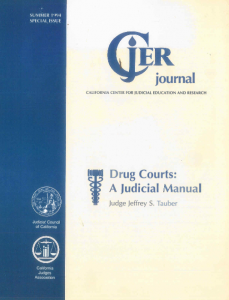Evidence Based Sentencing as a Hybrid System : Part 11
Evidence-Basd Sentencing Systems have been described in this series as problem-solving structures. More accurately they are hybrid courts that share the characteristics of traditional sentencing courts as well as rehabilitative problem solving courts. While they emphasize the need for collaboration, they often start off in a traditional adversarial proceeding. This is particularly true when individuals are convicted of serious or violent offenses. In those cases, the court correctly views their primary responsibility as protector of the victim and community. Evidence-Based Sentencing Systems, as well as more traditional sentencing courts, incapacitate the violent and/or serious felon so they cannot continue their criminal activity, sentence to deter others from committing similar acts, and provide retribution against the offender who has done serious harm to the victim and community. Prison is a probability and even a necessity for many of these serious and violent offenders.
Evidence-Based Sentencing Courts move into problem-solving mode as the felon prepares to reenter the community. In Evidence-Based Sentencing Courts, judges and their teams develop effective structures that apply to all offenders sentenced in their jurisdiction (not just the non-violent). In fact, the structure inherent in an evidence-based sentencing team is designed to hold the offender, as well as collaborating agencies and community programs accountable for their effectiveness or lack of same. At the time Drug Court and Problem-Solving Courts were first being developed, it was noted that, “In a “structurally accountable system”, participating agencies share program responsibilities and are accountable to each other for program effectiveness, with each participant directly linked to, dependent on, and responsible to the others (J Tauber, California Center For Judicial Education and Research Journal, Drug Courts: a Judicial Manual, Summer 1994; click on facimile on the left to review Section 30; on Structural Accountability).
In other words, If evidence-based sentencing practices are employed, coordination among relevant agencies and community organizations remains essential. Sentencing tracks are required to more effectively sentence and monitor offenders with very different risks and needs. While the sentences may be very different, the same level of coordination and collaboration is required when sentencing, monitoring, and rehabilitating the serious and/or violent offenders, as it is for the non-violent offender.


